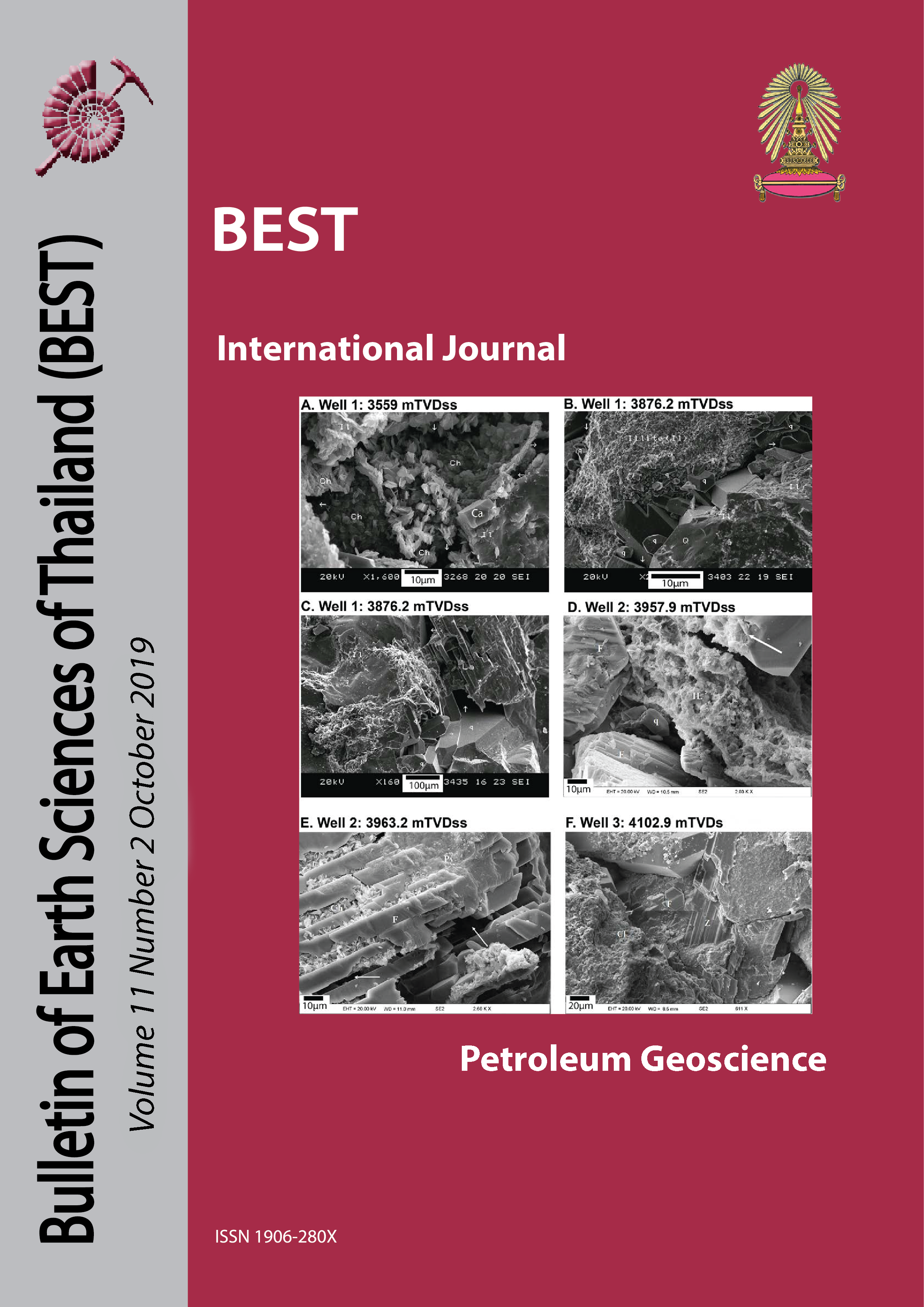Identification of Internal Salt Body Geometry Using Seismic Attributes, Volve Field, North Sea
Main Article Content
Abstract
Volve field is an important oil field of the Norwegian sector in the North Sea. Main oil reservoir in this field is Jurassic shallow marine sandstone. The structure of reservoir in Volve field is highly controlled by salt tectonics. The UpperPermian Zechstein Group is considered to contain mainly evaporites and carbonates which is overlying the LowerPermian Rotilegendes group and underlying the Triassic detrital clastic sediments. Zechstein salt doming started to develop in Early-Triassic and provides accommodation space for Triassic and Jurassic minibasins in this region until salt started to move out from the field in Early-Jurassic. The result of salt withdrawal caused a reduced Zechstein thickness than the original thickness and left the residual evaporites and carbonates in the Volve field. The evidence of salt withdrawal can be observed in seismic section by apparent downlap of Triassic reflector onto Zechstein reflector. The brittle property of residual Zechstein layer can be observed in seismic section where faults can cut through Zechstein layer. The salt thickness also varies throughout the field. Seismic attributes help to reveal the inhomogeneous lithology and lineations in Zechstein layer. Faults and lineations in Zechstein layer and surrounded sediment also align with regional structural trend. The NE-SW fault trend aligns with Viking graben axis, while NW-SE trend aligns with the Norwegian-Danish basin axis. The presence of faults and lineations in Zechstein layer confirmed that Zechstein layer in Volve field is the residual lithology resulting from salt withdrawal and it was affected by the complex tectonics in the North Sea.
Article Details

This work is licensed under a Creative Commons Attribution-NonCommercial-NoDerivatives 4.0 International License.
Copyright © 2008 Department of Geology, Faculty of Science, Chulalongkorn University. Parts of an article can be photocopied or reproduced without prior written permission from the author(s), but due acknowledgments should be stated or cited accordingly.
References
Bourbié, T., O. Coussy, and B. Zinszner, 1987, Acoustics of Porous Media: Editions Technip.
Chopra, S. and Marfurt, K. J., 2007, Seismic Attributes for Prospect Identification and Reservoir Characterization: SEG Geophysical Development Series, no. 11.
Geluk, M. C., 2000, Steps towards prediction of the internal tectonics of salt structures. In R. M. Geertman (Ed.), Proceedings of the 8th world salt symposium, The Hague. Amsterdam/New York: Elsevier.
Jackson, C. A. L., K. E. Kane, and E. Larsen, 2010, Structural evolution of minibasins on the Utsira High, northern North Sea; implications for Jurassic sediment dispersal and reservoir distribution: Petroleum Geoscience, v. 16, p. 105120.
Jones, I. F., and I. Davison, 2014, Seismic imaging in and around salt bodies: Interpretation, v. 2, p. SL1-SL20.
Malm, O.A. et al., 1993, Discovery Evaluation Report Well 15/9-19 SR, Theta Vest Structure – PL046A: Statoil.
Mario E. S. and Juan, C. S., 2003, Curvature attributes and seismic interpretation: Case studies from Argentina basins: Society of Exploration Geophysicists, v. 22, p. 1070-1165.
R. M. PEGRUM and T. E. UONES, 1984, 15/9 Gamma Gas Field Offshore Norway, New Trap Type for North Sea Basin with Regional Structural Implications: The American Association of Petroleum Geologist Bulletin, v. 68, p. 874-902.


